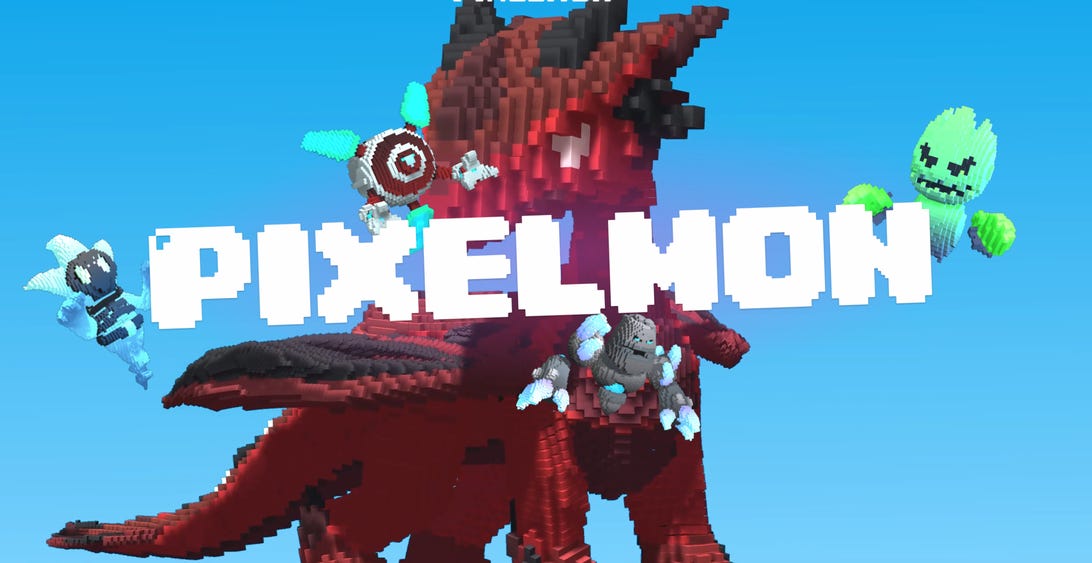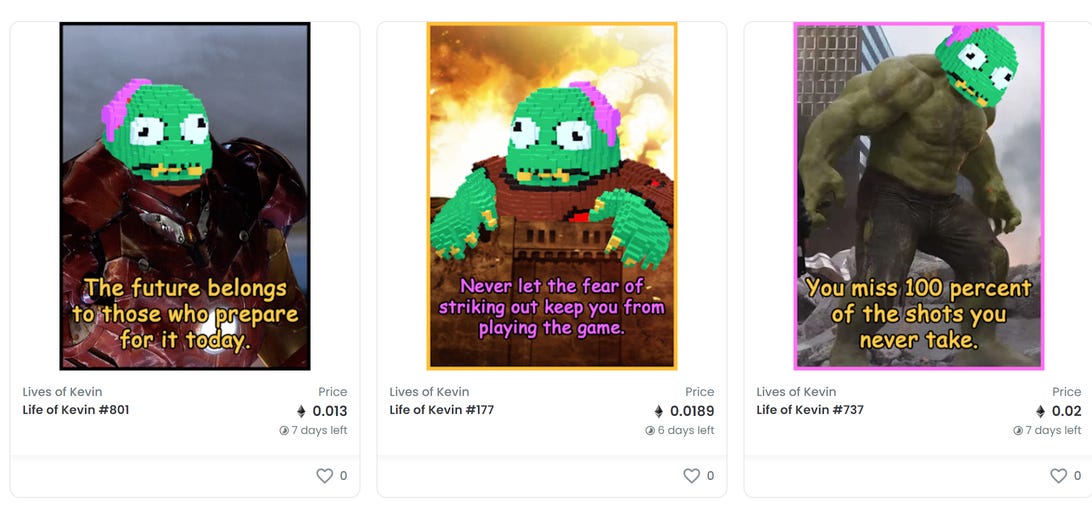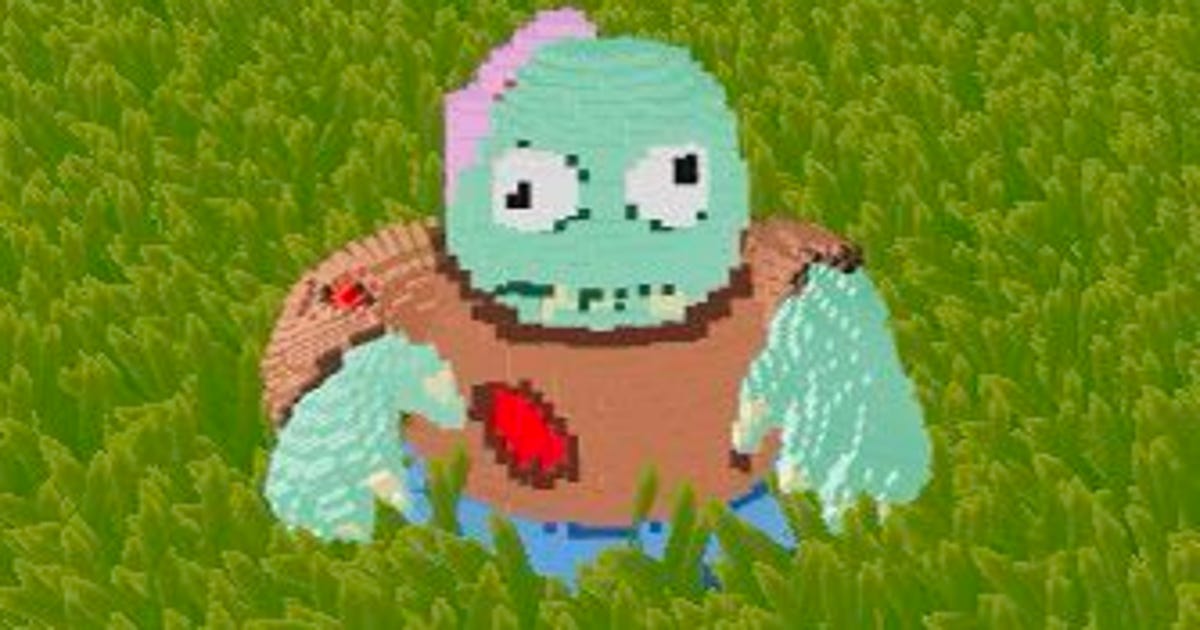Aimed to Be the Pokemon of NFT Games, People Are Already Calling Pixelmon a Flop

The developers released a collection of 10,000 Pixelmon NFTs in February.
Pixelmon
The concept is promising. Pixelmon is to be an open-world RPG set in the world of Eden, where the titular Pixelmon are captured, traded and sold as NFTs. Holders of those NFTs are to be given land where, upon the game’s launch at the end of the year, they can build living spaces, or create shops and become in-game merchants. In short, an NFT-integrated Pokemon. The developers released a collection of 10,000 Pixelmon NFTs in February, raising $70 million — a budget usually associated with blockbuster PlayStation or Xbox games.
But the project hit a roadblock over the weekend. After raising all that money, the team unveiled the Pixelmon that would inhabit the world. The project has been a laughing stock on social media ever since.
First, some context. NFT collections featuring 10,000 NFTs are not unusual. See the Bored Ape Yacht Club for the most popular example. However, in the primary sale where people buy directly from the creators, the price is usually below .1 ether ($280). It’s only on the secondary market, on marketplaces like OpenSea, that prices can rise to a small fortune. (Or, more commonly, fall to zero.)
Pixelmon was different. It was an incredibly hyped project, being attached to an ambitious open-world game. The team behind the project sold the collection through a Dutch auction, where the price began at 3 ether (about $9,000) and would lower by .1 ether every 10 minutes until the last NFT was gone. The collection sold out in an hour, with the NFTs selling for between 3 ether and 2.4 ether ($7,000).
The team raised over $70 million from the sale. Stylish, voxelated Pixelmon monsters had been advertised on Twitter, and a demo video claiming to show real gameplay footage had convinced investors and speculators to bet big.
Then, on Saturday, came the “reveal.” NFT art collections often have a scheduled mint date — that is, the primary sale — and then a reveal date a few days later. After minting an NFT, placeholder art shows up in the owner’s wallet. Upon reveal, you see what NFT you got. It’s a bit like Pokemon cards: Different NFTs within the same collection are valued based on how scarce their traits are, just like how a holographic Pokemon card is more valuable than a standard one, so the reveal is essentially the equivalent of opening your booster pack to see what cards you get.
The art that holders got — which many had spent over $9,000 on — was bad enough to become an instant meme. It also tanked the price of the collection. At the time of writing, the floor price (the cheapest an NFT in the set is listed on the OpenSea marketplace) is .39 ether ($1,500).
Pixelmon was one of the largest NFT drops EVER, raising $70m
THIS is what they look like after reveal today ???????????? pic.twitter.com/70XoL46mwH
— Blockchain Boy (WILL NEVER DM YOU FIRST) (@BlockchainBoyy) February 26, 2022
Pixelmon is one of many NFT projects that aims to do more than just provide art. Many are leaning into play-to-earn gaming, with NFTs of characters or monsters required to play. Pokemon is a common inspiration for such games, including Axie Infinity, which is the most popular P2E game yet. Other collections also try to create value by creating a digital world, a “metaverse”, in which NFTs can be used to create 1 of 1 avatars, or to allow for ownership of virtual real estate. Like cryptocurrency and standard NFT trading, though, prices are volatile.
Syber, the pseudonymous creator of Pixelmon, admitted the reveal went poorly in the project’s Discord server. (Most NFT business takes place on Discord.)
“I’m not going to sugar coat it — we made a horrible mistake,” Syber wrote on Discord. “This is unacceptable. We felt pressured to push reveal and the reality is we weren’t ready to push the art work. This does not represent the brand and we will fix this as we have let many people down with this reveal.”
He said $2 million will be spent to completely revamp the art. The Pixelmon team — which is fully pseudonymous — has also partnered with Magic Media, a video game development studio.
“No matter how long it takes, or how much FUD [fear, uncertainty and doubt] occurs, we are committed to delivering on our long-term vision and everything which was set out in our litepaper,” he tweeted.
The story doesn’t quite end there, though. The Pixelmon art reveal was such a public failure that it spawned an icon — or, at least, a meme — in “Kevin”, the turtle creature that became the face of the reveal. (“Kevin” is the actual name given to him by Pixelmon developers.)
It’s not merely that Kevin has become a social media meme. Kevin has become an asset unto himself. The floor price of Pixelmon’s NFT collection — that is, the cheapest ones you can buy — is .39 ether ($1,140). The floor price of Kevin Pixelmon is 4.75 ether ($13,900). Not only that, Kevin has become the star of his own deriviative art collections.
There’s The Lives of Kevin, essentially a set of motivational posters with Kevin’s head superimposed onto the heads of iconic figures, which for a few hot moments on Monday was the top trending collection on OpenSea. Some sold for as high as .295 ether ($860). Then there’s Kevin Punks, a play on CryptoPunks, a set of 8 bit NFTs that regularly go for six figures. Kevin Punks currently has a floor price of .85, or just under $2,500.
It’s an example of how NFTs allow meme culture to be commoditized — if only for an afternoon.

Three NFTs from the Lives of Kevin collection.
OpenSea
the fact that people are buying lives of kevin right now just shows how stupid this space can be and how people will literally ape into every dogshit project they see
disclaimer: I bought one
I am a piece of shit pic.twitter.com/4VLVpNxgVg
— ashrobin.eth (@ashrobinqt) March 1, 2022
So lots of memes and disappointment in the @Pixelmon
reveal today. And yes it could have been better. But @Syberer is passionate about this project and has $60 million to fix it. He won’t give up and neither will I. This is gonna turn around. And honestly mine looks awesome! pic.twitter.com/K1xxd5akv1— cryptoncash (@cryptoNFTcash) February 26, 2022
Not everyone was upset with the Pixelmon they recieved. Pixelmon’s roadmap states that the game, which will be browser based, will launch at the end of the year. Some are hopeful the ship will be righted by then.
For all the latest world News Click Here

